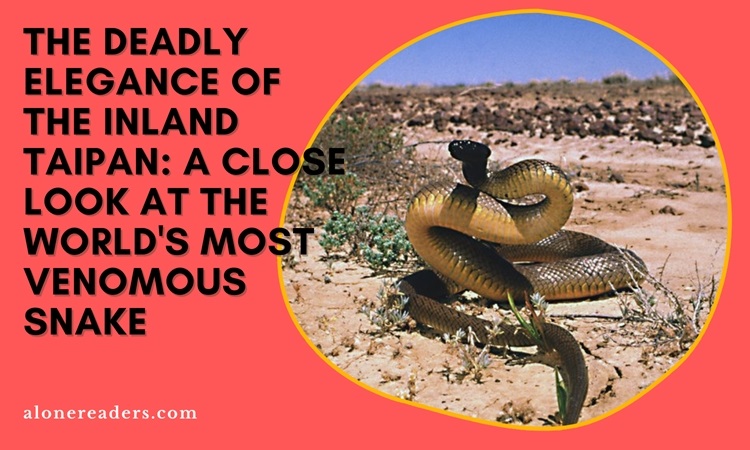
The Inland Taipan, also known as the Western Taipan, holds the title of the most venomous snake in the world, a designation that inspires both awe and fear. This distinction is not without merit; a single bite from this elusive serpent contains enough venom to kill at least 100 fully grown men. The potency of its venom is such that death could occur within just 30 minutes if left untreated. However, despite its lethal capabilities, the Inland Taipan very rarely comes into contact with humans, making it a mysterious figure in the realm of herpetology and a subject of intense fascination for those intrigued by the natural world's deadliest creatures.
Native to the arid regions of central east Australia, the Inland Taipan thrives in environments that are often remote and inhospitable to human settlement. Its natural habitat comprises deep cracks and crevices in the soil, which provide shelter from the harsh climate. This reclusive nature contributes significantly to the rarity of human encounters with this snake. Unlike other venomous snakes that may inhabit areas closer to human activity, the Inland Taipan's preference for isolated locales significantly reduces the chances of human interaction, thereby limiting the potential for danger.
The venom of the Inland Taipan is primarily neurotoxic, which means it attacks the nervous system, leading to paralysis and potentially fatal respiratory failure. What makes this snake's venom particularly daunting is its rapid onset of symptoms following a bite. However, it's essential to note that despite its fearsome reputation, the Inland Taipan is not an aggressive snake. It tends to be shy and reclusive, avoiding confrontation unless threatened or provoked. This temperament further reduces the likelihood of attacks on humans.
Interestingly, every reliable identification of a snake bite victim from an Inland Taipan has involved herpetologists—scientists who study reptiles and amphibians. These incidents typically occur during field studies or while handling the snakes in captivity. The professional context of these encounters is crucial, as it underscores the controlled environments in which such interactions usually happen. Furthermore, it highlights the respect and caution with which experts approach this formidable reptile.
The rarity of Inland Taipan bites is matched by the high success rate of treatment when they do occur. Thanks to advancements in medical science and the availability of specific antivenoms, those few who have suffered a bite from this snake have all survived. The development of antivenom is a testament to the progress in understanding snake venoms and the body's response to them. The antivenom for the Inland Taipan, developed through meticulous research and testing, neutralizes the venom's effects, allowing the victim's body to recover from the potentially lethal attack.
This success in treatment is significant for several reasons. First, it demonstrates the effectiveness of modern medical interventions against snake bites, a major public health concern in many parts of the world. Second, it highlights the importance of rapid response and access to medical care in the event of a snake bite. In the cases of Inland Taipan bites, timely administration of antivenom has been a critical factor in ensuring survival.
The Inland Taipan's behavior and ecology also offer valuable insights into the complex dynamics of predator-prey relationships in the natural world. Its diet primarily consists of small mammals, particularly rodents, which it hunts and immobilizes with its venom. This predatory role is crucial in maintaining the ecological balance in its habitat. By controlling rodent populations, the Inland Taipan indirectly influences the distribution and abundance of other species, showcasing the interconnected nature of ecosystems.
Conservation efforts for the Inland Taipan are equally intriguing. While it is not considered endangered, its secretive nature and the inaccessibility of its habitat pose challenges for conservationists. Ensuring the preservation of this species involves protecting its natural habitat and understanding its role within the ecosystem. Conservation efforts also benefit from the Inland Taipan's limited interaction with humans, as this reduces the risks of conflict and habitat encroachment that many other species face.
In conclusion, the Inland Taipan's status as the world's most venomous snake is a remarkable aspect of its existence, but it's just one part of a more complex story. This snake's interaction with humans, albeit rare, offers a unique perspective on the relationship between humans and the natural world. It reminds us of the respect and caution that should be exercised when encountering any wildlife, particularly species as potent as the Inland Taipan. Through continued research and conservation efforts, we can hope to better understand and coexist with these remarkable creatures, ensuring their survival and the health of the ecosystems they inhabit.